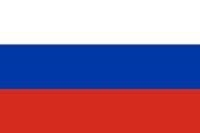
Automotive Coatings
2024-03-06 08:45
The market size of automotive OEM coatings worldwide was valued at $16.9 billion in 2022, according to data from Statista. It is forecast that the market value of this industry will grow to approximately $25.5 billion worldwide by 2030.
“In 2023, the automotive market slightly recovered, particularly due to the improved availability of semiconductor chips,” said Dr. Uta Holzenkamp, president of BASF’s Coatings division. “As a manufacturer of both automotive OEM coatings and refinish coatings, we were able to supply our customers with higher volumes to meet the resulting increase in demand.”
Starry Night was named Axalta’s 2024 Automotive Color of the Year (Photo courtesy of Axalta)
According to PPG’s Annual Report, automotive OEM coatings organic sales increased by more than 10%, led by higher selling prices in all regions and higher sales volumes in the U.S. and Latin America.
Sales were unfavorably impacted by industry-wide productions disruptions due to semiconductor chip shortages, which continued in 2022 but improved as the year progressed.
Sales volumes were also impacted by lower automotive industry production due to the geopolitical uncertainty in Europe and the impact of the pandemic-related disruptions in China.
Recovery from the Pandemic
Although there are still some lingering challenges associated with the pandemic, there is cause for optimism. Recovery is attributed to improved sales chain operations, renewed inventories and catching up on back orders from the previous year.
“Compared to the previous year, which was primarily characterized by high raw material prices and supply chain disruptions, the delivery situation for different value chains has improved a lot,” said Holzenkamp. “The automotive market has also recovered, which is largely attributed to the backlog of orders and replenished inventories following the resolution of last year’s OEM supply chain disruptions.
“The assumptions on the automotive market outlook for the coming years have significantly changed compared with our view in 2019,” Holzenkamp added. “Growth is expected to be moderate globally and stagnating in Europe. Our focus remains on delivering and developing winning factors that will contribute to our customers’ success now and in the future.”
PPG reported that in the first quarter 2023, global industrial production was expected to remain at lower levels. The annual report stated, “In China, pandemic-related disruptions are expected to continue into the first quarter. Aggregate sales volumes are anticipated to decline by a mid-single-digit percentage compared to the first quarter 2022.
"Sales volumes are expected to be similar to the prior year quarter in the automotive OEM coatings business…Positive selling prices is expected to continue, although some of the strong selling prices realized in 2022 will begin to reach their anniversary in the first quarter. Year-over-year segment margins are expected to continue to improve on a sequential basis in the first quarter 2023,” the report added.
Asia-Pacific and China remain the hottest regions for growth for automotive OEM coatings. One factor driving this growth is the increasing popularity of electric vehicles.
“The trend towards electric vehicles has significantly accelerated with different speed in the regions,” said Holzenkamp. “The automotive industry is currently growing primarily in the largest region, Asia-Pacific, and new Chinese manufacturers such as BYD are using their historical chance to conquer markets inside and outside their country. Accordingly, BASF has expanded its market position there in recent years through strategic investments. Europe, like North America, remains an important market for us. In the refinish coatings industry, we are currently seeing a consolidation of workshops in many regions, which we are supporting as a reliable global premium coatings partner.”
PPG recently inaugurated a battery pack application center (BPAC) in Tianjin, China. The $30-million facility features a full range of capabilities to test the application of PPG coatings technologies, materials and systems for electric vehicle (EV) battery packs, allowing customers to accelerate the development of new EV technologies.
“The new application center is an important milestone in our effort to support our customers in China in the EV battery market,” said Vincent Robin, PPG global vice president, Automotive Coatings. “The new facility will be an important way for customers to validate our customizable coatings solutions that help them reduce application cost, increase battery life, range and charging speed, and contribute to occupant safety.”
The BPAC will include application testing for PPG technologies, including powder coatings, fire protection coatings, dielectric coatings, adhesives and sealants, surface pre-treatment and e-coat technologies. Its modular design will allow for independent projects to be carried out concurrently in each of the application areas. This flexibility will enable development of material and process solutions across the range of current and potential customers.
Driving Innovation
The automotive industry is a high-tech sector that places the highest demands on materials and products.
“Accordingly, we work closely with our customers to develop the best possible technologies for their individual needs,” said Holzenkamp. “Modern automotive coatings must fulfill a variety of functions: they protect the substrate from corrosion, stone chips or UV radiation and make the vehicle an eyecatcher with stunning colors and effects. And all this in just the thickness of a human hair. Functionality is key – for our OEM customers and the car owners alike. Therefore, we focus on scratch resistance to keep the car looking new for a longer period of time.”
Certainly the pivot to water-based coatings is a primary factor driving R&D for automotive coatings. BASF has always been a forerunner when it comes to water-based coating technologies, be it for the OEM or the Refinish Coatings business. “We continuously develop our portfolio further, to minimize the environmental impact and provide our customers with the most sustainable products on the market,” said Holzenkamp.
“In September 2020, we launched our latest and most advanced refinish product lines R-M AGILIS and Glasurit 100 Line. By increasing the efficiency and significantly lowering the environmental impact, the products meet the highest expectations of modern body shops. Besides reducing CO2 emissions due to shorter process times in the body shop, the value of volatile organic compounds (VOCs) is consistently below 250g/l and thus the lowest on the market, making the new product lines the eco-friendliest automotive refinish coatings available.”
Sustainability is another factor for automotive OEM customers.
“We have focused specifically on this area for many years and offer innovative products and processes to support our customers in achieving their individual sustainability goals, said Holzenkamp. “Our aim is to make the best possible use of existing resources and reduce CO2 emissions. For this reason, we have introduced products in both the automotive OEM and automotive refinish sectors that are certified according to the biomass balance method and are based on the use of renewable raw materials at the start of the production process. Reducing the energy consumption, introducing low VOC products and increasing material efficiency are not only more efficient solutions, but also more sustainable.
“In addition to sustainability, we are also investing in research and development to enhance the functionality of coatings, such as improving transparency for radar waves and reflection for LiDAR sensors, which are crucial for driver assistance systems and autonomous driving.”
Color Trends
Keeping up with changing trends in color and design is essential for auto OEM coatings manufacturers. Each year, designers for BASF’s Coatings division create a new collection of colors to inspire automotive designers around the globe. The latest edition of BASF Automotive Color, titled ON VOLUDE, provides exciting colors that also adopt an increasing focus on sustainability and functionality.
According to the designers, non-classic automotive hues emerged, propelling colors through a series of shifts reflecting a positive mood, with a focus on lighter shades and the exploration of new, expressive color spaces. Throughout the trend collection, colors explore features far beyond color position by adding sustainable, recycled raw materials, LiDAR and RADAR compatible concepts, and haptic surfaces.
“Furthermore, we have been witnessing a steady increase in interest in contrast painting for surfaces and design elements in the automotive OEM industry,” said Holzenkamp. “With our innovative overspray-free paint technology (OFLA), we can provide our customers with the desire for individual decorative and contrast colors through a precise, fully automated painting process. We are already developing tailor-made products worldwide with our partners using the efficient and more environmentally friendly OFLA process.”
Axalta Coating Sytems announced Starry Night as it 2024 Global Automotive Color of the Year. Starry Night marks the 10th year Axalta has introduced its automotive color of the year and the first time featuring a black shade.
“Black is the second most popular automotive color globally and we’re excited to feature a black shade as our 2024 Global Automotive Color of the Year,” said Dan Benton, global color marketing director at Axalta. “Starry Night is a hue where black is bright and dark is distinguished. This year’s color is part cosmic and part classic, but all Axalta.”
More Hzinfo
- Recommended products:R-gen®919丨the only liquid photoinitiator commercially available for black UV systems
- R-gen® 919 is a novel photoinitiator introduced and is the only liquid photoinitiator commercially available for black UV systems.
-
2025-01-15
- Recommended products:TR 5262 Crack Resistance Fatigue Tester
- It evaluates the ability of surface coatings to resist damage caused by concrete cracking.
-
2025-01-14
- CEPE Disagrees with Decision on TiO2 Antidumping Duties
- Tariffs on Chinese imports threaten viability of many EU paint makers.
-
2025-01-14


 English
English 简体中文
简体中文 Русский
Русский إنجليزي
إنجليزي